Building a local fireplace to facilitate garri production.
Building a Local Fireplace.
It all started with the harvesting of cassava from the farm. It was one of those beautiful days where the sun is not smiling too harshly, with good cloud cover and some occasional wind that keeps the temperature low, conserving energy for the harvest.
Compared to the size of the land, the harvest was good, and this cassava will be processed into Nigeria's number one staple, Garri, a popular West African food.
The cassava goes through the peeling process where its outer bark is removed using a knife. Peeling is a back-breaking process, followed by washing and grinding. The grinding is the catalyst that quickens the fermentation process by increasing the surface area of the cassava. The cassava goes into a press to extract water, and comes out as a cake ready to pass through a sifting process.
The fireplace
After sieving comes the drying, frying and roasting.
To extract all the water for proper storage, a lot of heat is needed. A firewood-powered fireplace has always been the option. Drying the cassava in a metal dish, resting on a tripod fireplace powered by firewood comes with a lot of challenges. The heat from the open flame, with all the smoke, makes this part of the work exhausting.
The more heat, the faster the drying process but you get cooked too, and the smoke is blinding. That is why I decided to build one of the traditional wood-powered fireplaces that addresses the problem of smoke, uncontrolled heat and uses less firewood.
This simple and more efficient fireplace needs only a few basic materials, blocks and laterite. The blocks serve as a reservoir that stores heat, while the laterite creates the shape that holds off the smoke and controls the heat.
Arrange the block in a U shape, and use the laterite as mortar to hold the block. The block and laterite hold the heat and also shield the user from the heat. The walls of the fireplace make contact with the dish or pot, which keeps the smoke. The only opening serves as an air intake, a smoke exit and the space for loading firewood.
You can maximise its efficiency by making sure you position the air intake section of the fireplace in an orientation that allows wind to blow into the fireplace giving it a constant supply of oxygen.
Conclusion
You can try this fireplace. It is easy to make, conserves firewood, and protects the user from heat and smoke. Be careful, the fireplace remains hot long after use. The glowing coal lingers long after the fire is off. Protect it from rain by covering it well or building a shade over it.
I would love the following to sample their opinion about this local fireplace; @okere-blessing, @emmalex25 and @josepha.
Media Credit |
|---|
| Composer | @manuelhooks |
|---|---|
| Graphics from | Galaxy-A15 |
| Edited with | PhotoStudio, inShot, Canva |
| Entry type | Freelance |
| Date | Fri.. 6th June |
| (@) 2025 |
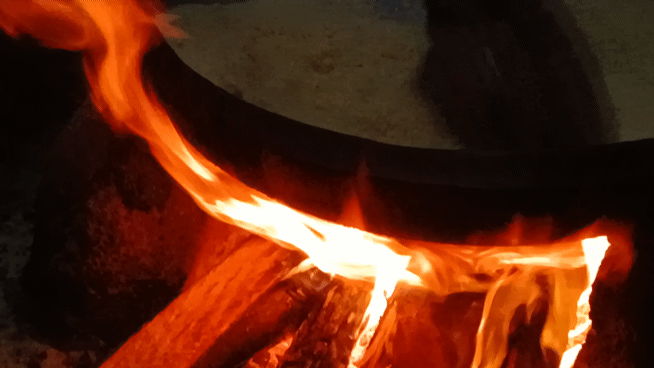 | 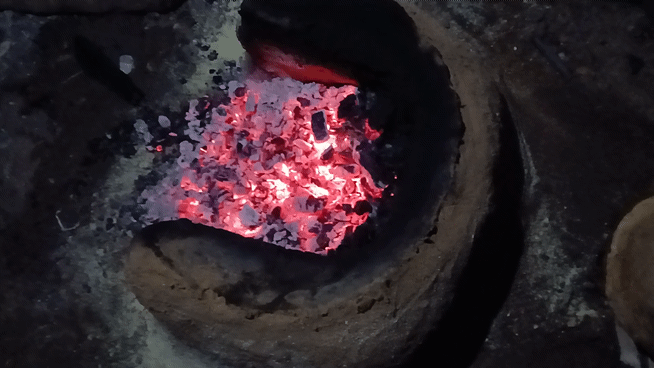 | 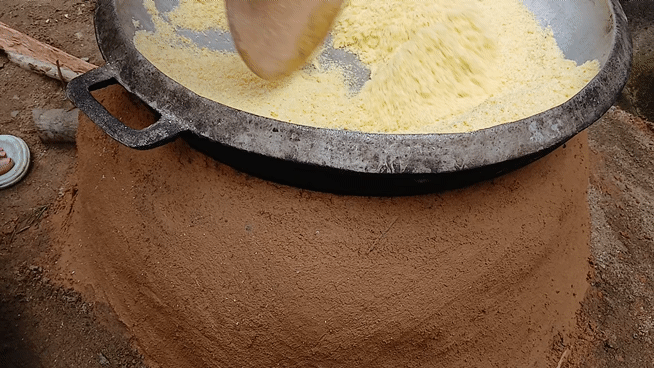 |
|---|
All Graphic elements are a production of @manuelhooks
#steemvideo #steemexclusive #food
#diy #creativewriting #nigeria
#educational
#club5050

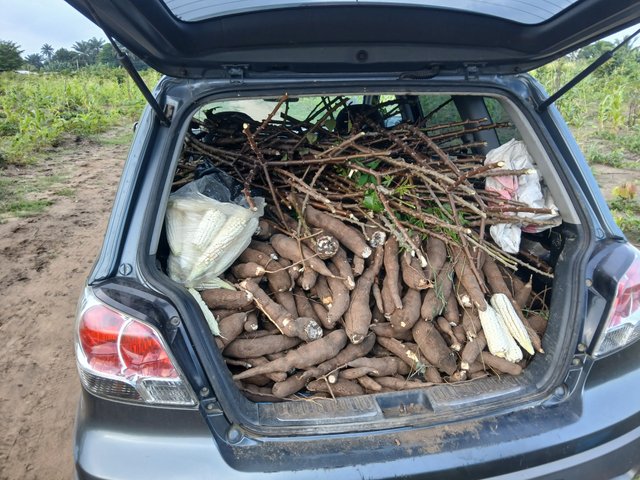
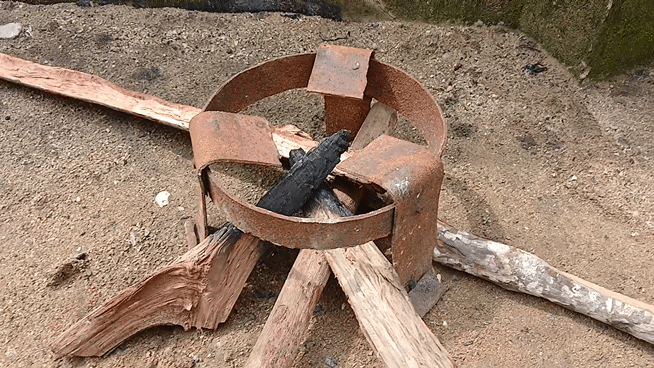
This is amazing, I can remember when my father used to construct this for us then in the village so that we can fry garri. I don't know you do same here I will be coming around for my hand-made Garri.
Please consider supporting Proposal #100 to boost the video on Steem.
Curated by @marvinvelasquez
A big thank you to @marvinvelasquez for the support, I really appreciate.